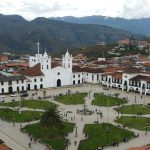La Route des Vins was created to link area wineries
Quebec tourism officials promoting the region lying east of Montreal have grape expectations for a burgeoning wine industry.
And those same officials are inviting oenophiles and tourists who may simply have a passing interest in wine to experience that industry for themselves by working their way along part or all of the Route of the Wines.
Quebec hasn’t carved out a particularly high profile when it comes to the world’s wines but Stephanie Dupuy of CLD Brome-Missisquoi says vineyards are now common in her area.
“The first commercial vineyard in Quebec – Domaine des Côtes d’Ardoise in Dunham – was established in 1981,” she reports. “La Route des Vins itself was founded in 2003. Today there are 25 vineyards on the official wine route, plus about 10 others in Brome-Missisquoi that are either just starting up or operating without the agrotourism component. So we’re talking about roughly 35 wineries in the region. Across the entire Eastern Townships, there are 55 vineyards as of 2024, representing 38% of Quebec’s wine production. So while we’re still a relatively young wine region, we’ve become a significant player in the province’s wine industry.”
Dupuy labels Quebec wine sales as spread out, with about 30% sold through provincial liquor stores, 28% through grocery stores and specialty food shops, 11% in restaurants, and another 30% sold directly at the vineyards.
“As for reviews, Quebec wine is definitely gaining respect,” she continues. “There’s growing demand and increasingly positive press. The winemakers have really stepped up their game – both in the vineyard and in the cellar. But it’s also about consumers learning to appreciate what makes Quebec wines unique. We have a northern climate that produces wines with a very different character from European wines, which were the reference point for so long. People are starting to understand and embrace those distinctive flavours rather than expecting Quebec wines to taste like something else.”
White wine accounts for 47% of regional production, while red wines make up 27% of production, so they’re well represented too. There’s also 6% sparkling wine production, and smaller amounts of more specialized wines like orange wine, fortified wines, late harvest, and ice wine.
The wine route links wineries, most of which offer guided tours, though the format varies from one vineyard to another. Generally, guided tours can be booked in advance. Details about what each winery offers are available on the website at laroutedesvins.ca.
“The tours typically include vineyard walks, cellar visits, and tastings, but since each place has its own approach, it’s worth checking their individual offerings when you’re planning your route,” Dupuy advises.
“All the wineries offer wine tastings, some with commentary and some without. Again, the format and prices vary from place to place. It’s really the heart of the wine route experience – you can taste before you buy and discover what styles you prefer.”
Dupuy says she’s confident that Quebec’s wines will continue to gain appreciation. “The growing experience of winemakers and their increasingly refined expertise, combined with the numbers — steady growth for 40 years and a 63% jump in bottle sales just in the last five years — suggests that Quebec wine’s reputation is on a strong upward trajectory. As the winemakers get better at their craft and more people discover what Quebec wines have to offer, I think we’ll see the profile continue to rise.”
Most area wineries are open from mid-June to mid-October, so the entire summer is great for visiting. Early season – June and July – tends to be quieter, which Dupuy says has its advantages.
“Fewer crowds means more peaceful settings, quieter spots to relax, and more time to chat with the passionate winemaking teams. Harvest time in September-October is really popular but also much busier,” she states. “A few vineyards are also open in winter, which offers a completely different experience. The winter wine route gives you a real glimpse of the harsh northern conditions that Quebec vines have to survive — it’s quite something to see.
“Ice wine is produced in small quantities at a handful of vineyards in the region, including Vignoble Courville and Vignoble de l’Orpailleur.”
The Wine Route has about nearly a 100 partner businesses called “Les Amis de La Route des vins” (Friends of the Wine Route).
“These aren’t just partners — they’re passionate entrepreneurs who enrich your journey at every step and add diversity and personality to our wine route,” Dupuy continues. “We’re talking accommodations, boutiques, microbreweries, restaurants, and much more! The offerings are vast and diverse along The Wine Route, giving you plenty to plan a long stay and reason to come back often for a different experience each time.”
Meanwhile, Dupuy says the route is great for energetic oenophiles.
“Brome-Missisquoi, the region where La Route des vins is located, is recognized as a premier destination for cycling,” she reports. “The area offers stunning landscapes, charming villages, and remarkable Loyalist architectural heritage, all connected by peaceful country roads with minimal traffic. This combination creates an ideal setting for cyclists of all levels. The vineyards themselves serve as perfect rest stops along the cycling route, where riders can catch their breath and recharge with a glass of wine and light bites. This unique concept transforms the traditional wine tour into an active, immersive experience that combines physical activity with wine discovery
“You can fully appreciate the surrounding landscapes in a way that’s simply not possible from inside a car,” she adds of cycling. “Cycling allows you to experience the scenery at a slower pace, taking in the details of the countryside, the vineyards, and the charming villages. Another major advantage is the unique combination of physical activity with a more hedonistic pleasure – you’re getting exercise while indulging in wine tasting, which creates a perfect balance. However, the main drawback is that it’s rarely feasible to make purchases at the vineyards while cycling. You simply can’t carry bottles of wine safely on a bike tour. This means that cyclists typically need to return by car later in the day or the following day to the vineyards they visited, specifically to purchase their favourite wines from the tastings.
“The wine route by bike tends to attract people who appreciate both active outdoor pursuits and culinary experiences. These are often individuals who enjoy discovering local culture and terroir in a more immersive way.”

















